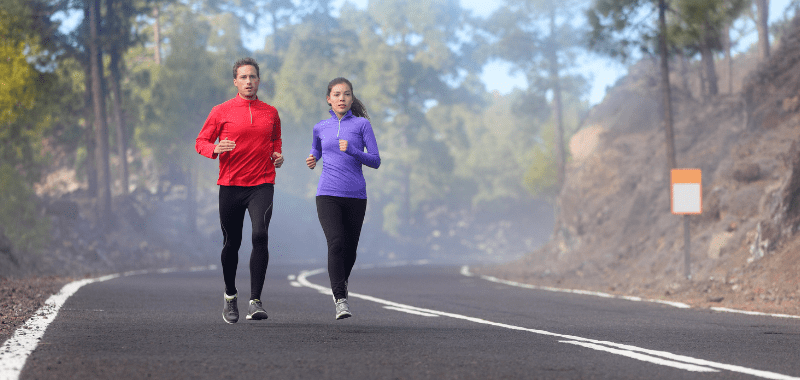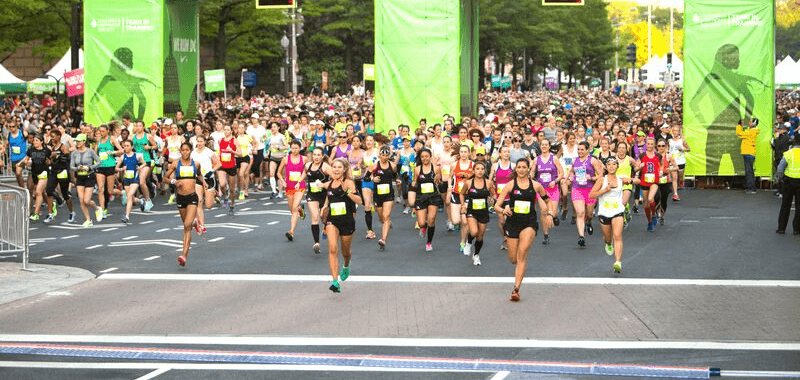Tabla de contenido
If you train to improve your cardiorespiratory endurance, why don’t we pay special attention to the respiratory muscles? Despite the scientific evidence on the effectiveness of specific training of the respiratory muscles to improve sports performance, few athletes and runners use this type of training in their routine. In the following article, we explain the reasons why you should train and a respiratory training plan.
Why is it essential to train the respiratory muscles?
Training the respiratory muscles is much more important than we could imagine. Various studies have shown that performing specific exercises to train in this area can increase lung strength and endurance and, therefore, make us more efficient while running.
Under the myth that running strengthens breathing, the fundamental practice of specific dedication to these muscles has been abandoned. This will be the key to making your legs and lungs more effective during the activity.
Respiratory muscle training will provide you with the following benefits
- Decreased heart rate during exercise
- Reduction in maximum respiratory effort for each breath
- Deeper breathing
- Greater post-effort recovery
- Improved perception of effort
- Strengthens respiratory muscles
- Improved respiratory efficiency
- Improved performance and physical condition
Fatigue of the respiratory muscles leads to mechanical and respiratory limitations, especially in activities that require excellent resistance
The oxygen debt that occurs with prolonged physical exercise affects the large muscle groups and the respiratory muscles, which triple their effort by increasing the respiratory frequency.
In addition, the high respiratory demand during exercise decreases blood flow in the legs, increasing leg fatigue. Therefore, by increasing the resistance of the respiratory muscles, the oxygen demand will be reduced, resulting in less fatigue with the same effort.
Another point to highlight is the mechanical limitation of breathing during fatigue. Gaining width in the rib cage will translate into greater respiratory capacity. A study found that people who had performed exercises to release tension in the thoracic diaphragm improved both the mobility of the rib cage and oxygen consumption compared to the group that did not.
The proper muscular balance between the different pairs of muscles involved in inspiration and expiration will be vital in avoiding fatigue or overtraining of the thoracic diaphragm. The thoracic diaphragm is the primary inspiratory muscle. With the help of the rest of the accessory muscles, it promotes the opening of the rib cage from all directions.
How do you avoid fatigue when breathing?
To avoid diaphragm fatigue, it is vital to have adequate muscular balance with the pectoralis major, pectoralis minor, posterior fibers of the latissimus dorsi, serratus major, serratus minor (posterior, superior and inferior), rhomboid, trapezius, quadratus lumborum, intercostals, sternocleidomastoid, scalenes, external fibers of the external and internal obliques, dorsal spinal cords and supracostals. Each of them participates in inhalation by influencing the extension of the spine and the elevation of the ribs.
Keeping the chest expanded during the race facilitates inhalation and exhalation. Great athletes breathe with the diaphragm at maximum muscular power, participating with the abovementioned inspiratory muscles.
The trick of the great champions is to keep the chest expanded and coordinate the movements of the inspiratory and expiratory muscles with arm movement.
Proper back positioning, strengthening of the dorsal-lumbar and abdominal muscles, and elasticity of the spinal muscles favor the hydration of the intervertebral discs by generating similar compressions and decompressions throughout the transverse plane of the disc surface. This prevents unnecessary back pain.
LOW-PRESSURE FITNESS: YOUR RESPIRATORY TRAINING PLAN
Low-Pressure Fitness is a training system based on the hypopressive technique that combines respiratory and postural reeducation. Its progressive respiratory training exercises are ideal to help relax the tension of the diaphragm and increase thoracic mobility and maximum expiratory flow. Its vital postural training will help you train the erector muscles of the spine at the same time, being an adequate prevention of lower back pain. Below, we show you four simple exercises to do at home from the LPF training program:
Rib cage expansion exercise
Lie on your back in a comfortable, relaxed position for the spine. Place both hands around your ribs to feel the rib cage expanding. Breathe deeply, trying to maximize the opening movement of your ribs. Feel the rib cage opening and separating as you breathe in. Exhale gently through your mouth, and now feel the ribs closing naturally. The difference between the maximum and minimum opening of the rib cage is called thoracic expansion or mobility. This exercise will help you to know the degree of rib movement. If it is restricted (between 2 and 3 cm of maximum opening), practicing until you manage to increase rib expansion will be convenient.

Self-resistance exercise for rib expansion
Place both hands on your ribs. Take a deep breath in and slightly resist the opening with your hands. As you take more breaths, you can increase the intensity of the resistance to the opening. This is an ideal exercise to improve the strength of the inspiratory muscles, such as the serratus anterior and the intercostals.
Diaphragmatic release exercise
In the same position, place your fingers along the rib cage. During exhalation, gently massage the edges of the rib cage from the xiphoid process to the last ribs. You will notice how the tissue becomes more flexible as you perform the self-massage. To improve respiratory movement, it is recommended to first stretch and release any myofascial tension that may exist. This exercise will be conducted on the main respiratory muscles (thoracic diaphragm) and the accessory respiratory muscles (cervical, pectoral, and abdominal muscles).
Hypopressive Breathing
Hypopressive breathing is characterized by alternating diaphragmatic breathing with “diaphragmatic aspirations,” which consists of emptying the abdomen through expiratory apnea associated with chest expansion.
This exercise is performed in apnea, without air in the lungs. Lie on your back and breathe deeply and widely three times. On the third breath, expel all the air and try to keep the rib cage open for 6 to 10 seconds.
Next, breathe through your nose and slowly expel the air through your mouth three times. Repeat the breathing sequence several times. This exercise will help you strengthen the muscles that open the rib cage, such as the serratus anterior, while the thoracic diaphragm is stretched.
You can try to increase your apnea time slowly, which will challenge your ability to hold your breath and improve your perception of fatigue and resistance to effort when you lack oxygen.

Tamara Rial (PhD) and Camilo Villanueva
Graduates in Physical Activity and Sports Sciences
Directors of the International Hypopressive and Physical Therapy Institute
Co-founders of Low-Pressure Fitness
Looking for a plan that trains with you, not against you?
At running.COACH, we don’t just build a schedule. We create a smart, living plan that evolves with you. It understands your level, your race goals and your real life. Whether you sync your GPS watch or train straight from our iOS or Android app, your plan adjusts automatically as you improve.
From day one, you’ll feel the difference:
- A fully personalized, dynamic plan designed for you.
- Automatic sync and effortless workout tracking.
- Real-time updates when life happens, including missed sessions, new races or schedule changes.
- Simple, science-backed guidance to train smarter and recover faster.
🎁 Start today and enjoy your first 30 days free.
Because the best training plan isn’t one you follow. It’s one that follows you.app.











0 Comments